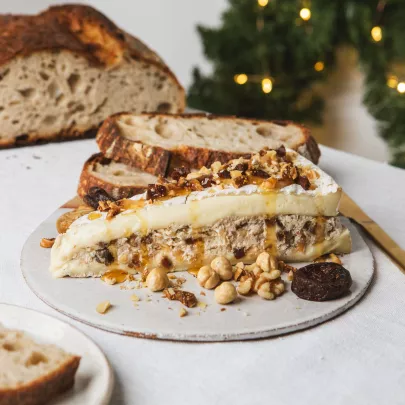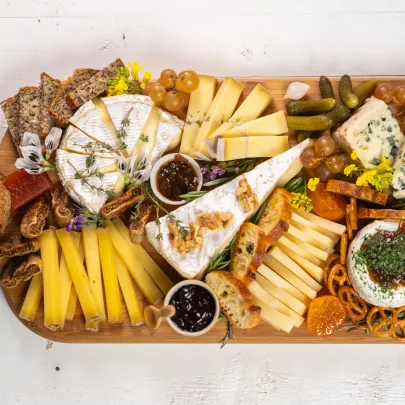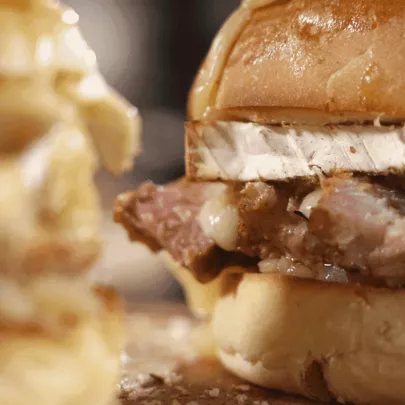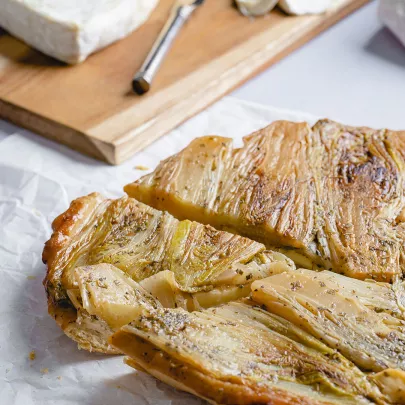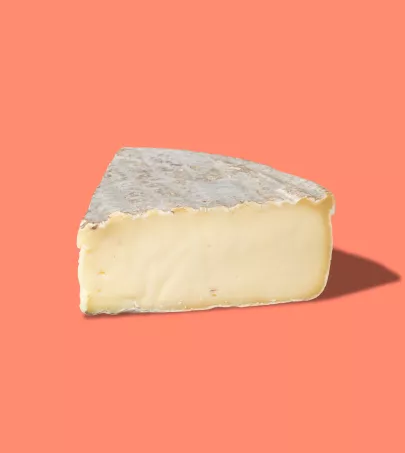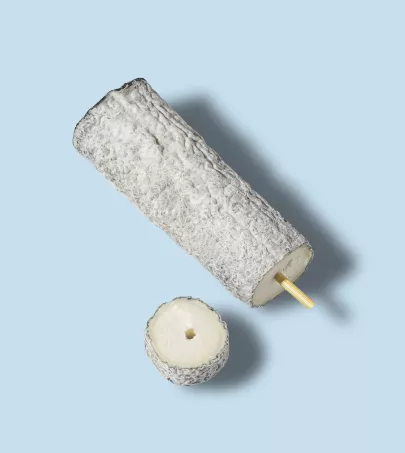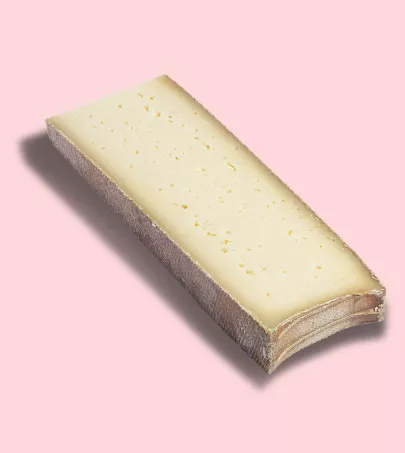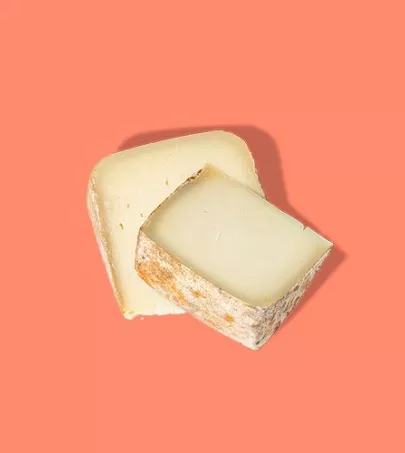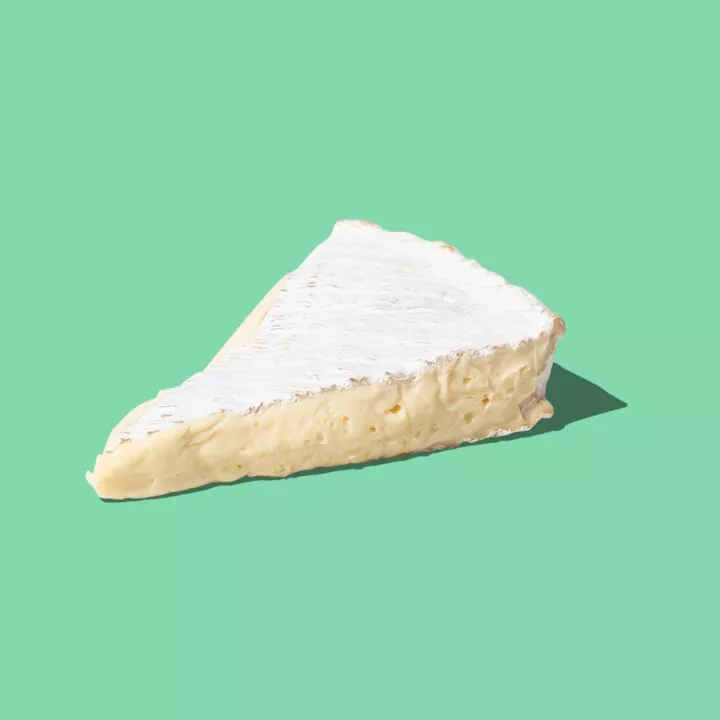
Proclaimed the "King of Cheeses" by Talleyrand, Brie de Meaux PDO has been tickling royal taste buds since the Middle Ages, with its creamy paste, buttery taste and bold character.
What you need to know
An impressive cheese, instantly recognizable by its diameter, Brie de Meaux PDO has a soft paste and a bloomy rind, and is made from raw cow's milk. This cheese’s origins are said to trace back to the Middle Ages, more precisely to an abbey near Meaux, a town that was once home to the region’s largest market. Brie de Meaux quickly became a favorite at the royal court—Louis XIV even had it delivered weekly to Versailles.
Brie de Meaux PDO is made exclusively with milk from cows raised in the designated production area. The process is meticulous: the cheese is molded by hand using a special tool known as a "brie shovel." After being salted with dry salt, the Penicillium mold that forms the characteristic rind is added. Each cheese, typically about 14 inches in diameter and weighing between 5.7 and 7.3 lbs, is then aged in cellars for 4 to 8 weeks, allowing its flavors to fully develop.
Historical Evolution: Brie de Meaux Through the Ages
Brie de Meaux is more than a cheese – it’s a piece of French history, with each bite a window into centuries of gastronomic tradition. Whether enjoyed on its own or in a dish, this cheese brings history and flavor to the table.
It all started in the Middle Ages in an abbey near Meaux where the cheese was born. This humble beginning didn’t stay local for long. By the time of King Louis XIV, Brie de Meaux was a favorite at the royal court and was delivered weekly to Versailles to satisfy the King’s refined taste.
As the years went by Brie de Meaux became more and more popular, crossing social and geographical boundaries. In the 19th century it was declared the “Prince of Cheeses” at the 1815 Congress of Vienna where it won over the most discerning European diplomats. Despite the industrialisation of food production in the 20th century Brie de Meaux managed to keep its artisanal side thanks to strict production rules that preserved the traditional techniques.
Today Brie de Meaux is a Protected Designation of Origin (PDO) product so it is made with the same care and know-how that has been passed down through the generations. From the hand-moulding of the cheese to the use of raw cow’s milk from the designated area, every step of the production is a wink to the past even as modern innovations help to maintain the quality. The journey of Brie de Meaux from a local treasure to a global icon is proof of its timeless appeal and the French culinary tradition.
Artisanal Craftsmanship: Tradition and Innovation in Brie de Meaux production
Brie de Meaux production is a perfect mix of tradition and innovation. At the heart of it is a deep respect for the methods that have been used for centuries. Every wheel of Brie de Meaux is hand-moulded with a special tool called a “brie shovel”, a technique that dates back to the early days. This method and the use of raw cow’s milk from the PDO area ensures each cheese has the real taste of Brie de Meaux.
But this authenticity doesn’t mean we don’t use modern innovations. Brie de Meaux producers have adopted new technologies that improve the quality and consistency of the cheese. For example innovations in the aging cellars allow for more precise control of the maturation process so every cheese reaches its peak flavor.
And sustainability is now a major focus in Brie de Meaux production. Many local producers are adopting sustainable farming practices, from the care of the cows to the management of the pastures. These practices not only preserve the environment but also the milk and ultimately the cheese.
And yet the soul of Brie de Meaux remains the same. It’s a cheese that is rooted in history, every wheel a testament to the local artisans who balance tradition and modernity. Their determination to keep the highest standards and to innovate when it makes sense will ensure Brie de Meaux will remain a part of French gastronomy for ever.
Some Brie Recipe Ideas
Brie is an incredibly versatile cheese, making it a star ingredient in many recipes. For a decadent appetizer try Brie de Meaux with black truffle, where the creamy Brie is paired with the deep savory flavor of Périgord black truffle. If you’re in the mood for something different, the Tarte Tatin with Endives and Brie Cheese is a must, the sweetness of the caramelized endives with the creamy Brie in a pastry is just divine. And for a crowd-pleaser, Baked Brie in Puff Pastry is a very simple Brie recipe that never disappoints—the Brie is wrapped in flaky pastry, baked to golden and served warm, oozing with melted goodness.
Characteristics
Smell
Look
Taste
Nutritional benefits
Brie is an excellent source of calcium and protein, making it as nutritious as it is delicious.
Editor's note
How to use
Tasting tips Brie de Meaux Cheese PDO
Brie de Meaux is a must-have on any cheese board and pairs beautifully with soft sourdough bread. It also shines when melted in gratins, buckwheat pancakes, or savory tarts. Two regional specialties, galette briarde (brie shortbread) and croque-briard (a croque-monsieur made with Brie), showcase its versatility.
Pair with
Savory: Hazelnut, truffle, green apple, pear, bacon
To Drink: Givry PDO, a red Saint-Nicolas-de-Bourgueil PDO, Alsace Pinot Noir PDO, a red Saumur PDO

